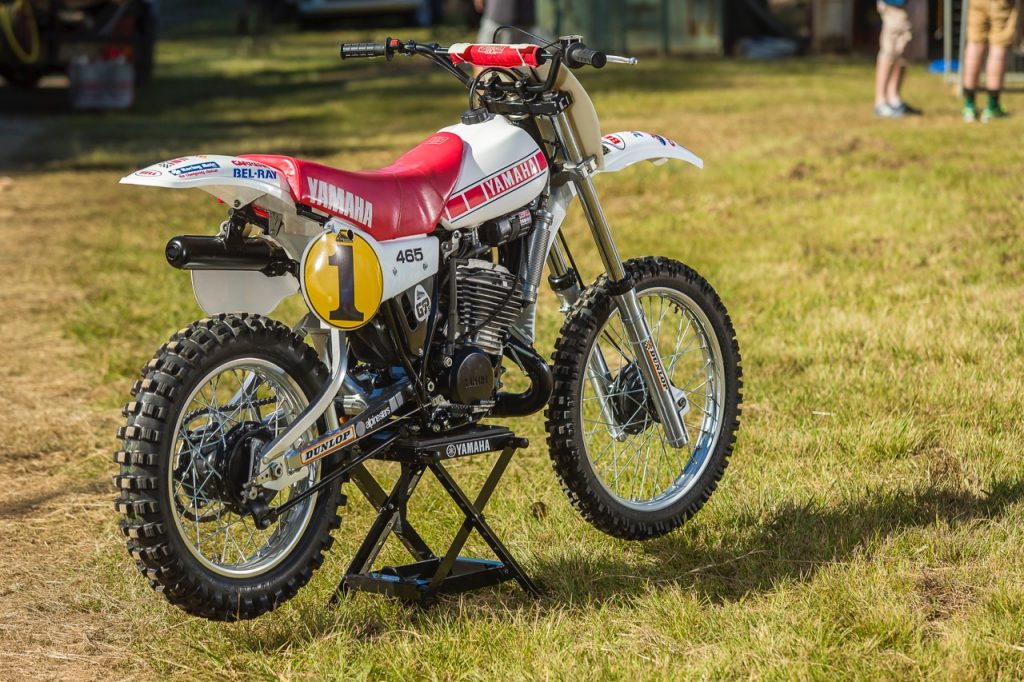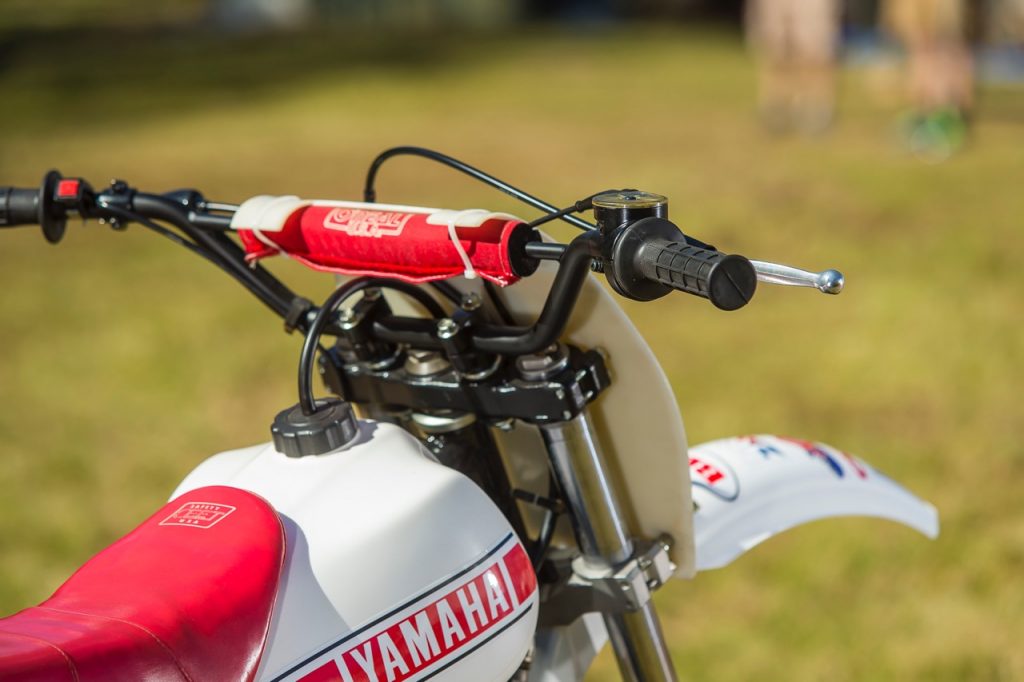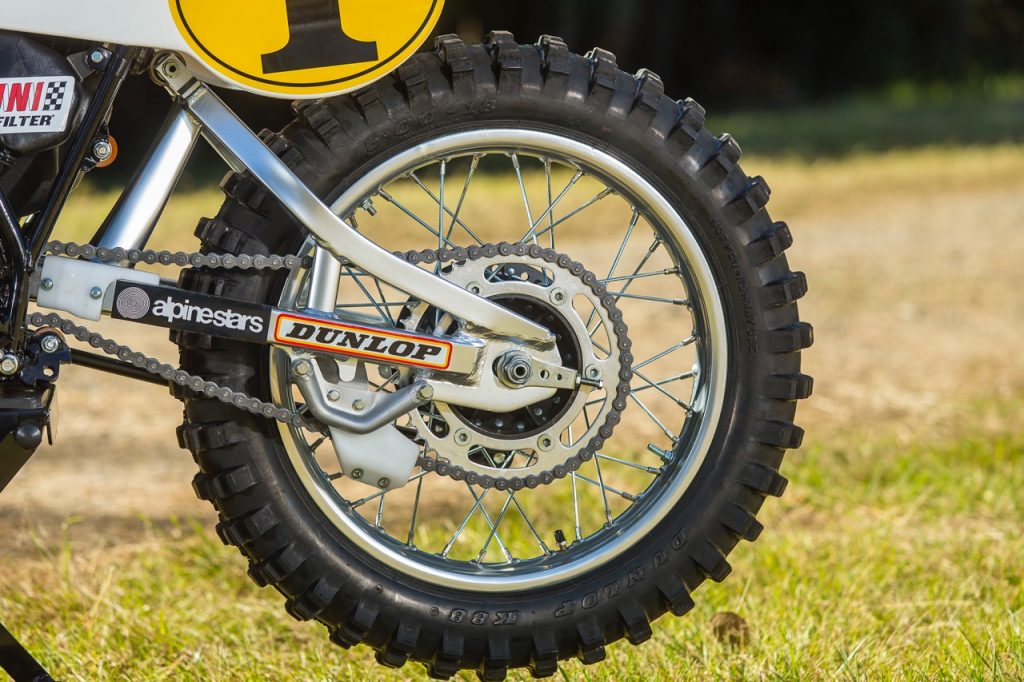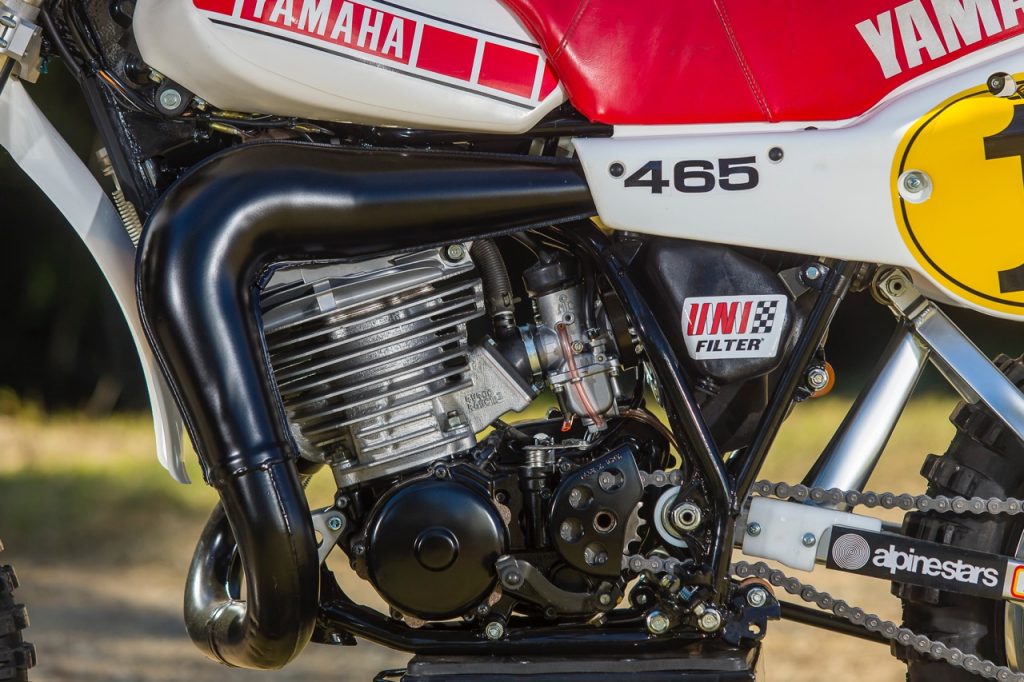Every motocross manufacturer has an iconic model. For Honda, it’s the early Elsinores, for Maico it’s the 1981 MC490 and for Yamaha it’s the YZ465.
The YZ465G had the biggest available donk and was the first production motocrosser to claim 50hp at the crank when Yamaha bumped its open-class bike from 400cc in 1980.
BORE SIZE
To start with, Yamaha just increased the bore, producing short-stroke, high-revving motors. With the 1979 YZ400F it redesigned the motor to give a 5mm longer stroke, at 75mm, and reduced the bore from 85mm to 82mm, chasing some of that stump-pulling grunt that big bores are famous for.
The increase to 465 for 1980 really hit the spot and a legend was born. Both testers and buyers loved the YZ465G with its hard-hitting power delivery which could dump the unwary over the rear guard in a millisecond.
For the 1981 H model things were tamed a little to make the bike easier to ride but it was far from slow. Stephen Gall took the 1981 Mr Motocross title riding one in three of the five rounds rather than his OW51 works bike. Gall recalls that the OW51 was faster but the production bike handled better and was also good enough to win the Australian 500cc Dirt Track Championship that year.
MONOCROSS
The G had 40mm fork tubes which increased to 43mm Kayabas on the H because the twin-leading-shoe front brake worked so well that under hard braking the 40mm fork could flex enough to bind, a habit that could also show up in ruts. It had a monoshock on the rear.
The front anchor on the 465G was unique. All the other YZs made do with single-leading shoe stoppers and, until the introduction of discs, it was unbeatable.
Dyno figures from a Pommy magazine show only a slight change in rear-wheel horsepower between the G and H. At 7000rpm, the G made 41.92 ponies and the H 42.18 but peak torque was down slightly. At 6000rpm the G was good for 34.51 foot-pounds but the H only put out 33.8. Both motors pulled cleanly on the dyno from 2000rpm but the YZ465H had an advantage in both torque and horsepower up to 4000. Things changed from 4500 to 6000, with the G getting a slight lead and from 6000 to 8000 it was the domain of the H again.
Two things common today but introduced on the YZ465H were a side-pull throttle and folding gearlever tip. Before this the YZ’s throttle cable exited the twist grip at 90 degrees to the handlebar and usually flapped in the breeze where it was easily damaged. This was a common arrangement and Gunner Gasser Whirlpull throttles were a popular mod. The folding gearlever tip did a lot to stop impacts being transferred into fragile side cases or the selector shaft.
After the 1981 Maico MC490 Mega Two, the YZ465G and H are the most desirable open class bikes for VMX, and certainly the best choice from the Japanese brands of the late ’70s to early ’80s.
ONE WITH MORE
The OW51 that Yamaha supplied to Stephen Gall in 1981 differed from the production model in many ways, but the most obvious visual clue was the colour scheme and the location of the remote reservoir.
The sand-cast magnesium engine had a larger capacity than the production motor. The OW made do with a four-speed gearbox and a new idea from Yamaha’s road racers was included, a boost bottle that had debuted on its 125 GP bikes. Yamaha called it YEIS, which stood for Yamaha Energy Induction System.
Although a megabuck machine, the OW51 was rumoured to be heavier than the 104.78kg YZ465 and it didn’t handle as well, particularly in the back. The fork was better and it turned easily but Gall went to a Fox shock in an attempt to improve things. His mechanic at the time, Steve Ashkenazi, recalls using White Power and Ohlins shocks on the production bikes. The OW51 was air cooled but had an optional liquid-cooled barrel.
During the 1981 season, Gall swapped between the OW51 and his modified YZ465 and even used the OW51 motor in the YZ-H frame. The different geometry of the production frame combined with the greater power of the OW engine was the best choice on some tracks.
Gall’s main competition was Anthony Gunter on the Suzuki RM400X with its Full Floater rear end and Trevor Williams on a works Kawasaki 440. The YZ465 and OW51 were still good enough for Gall to take the 1980 and 1981 Mr Motocross trophies as well as the 1980-81 Pro Open Title and the 1981 Australian 500 Dirt Track Championship.
Many thanks to Stephen Gall and Steve Ashkenazi for their help in putting this story together.
Warren Jack






